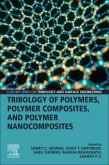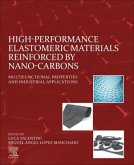Thermally Conductive Polymer Composites provides an important introduction to the key principles, methods, and research directions of this emerging thermal management material category.
This book introduces thermal conduction, measurement methods, thermal conduction mechanisms, and related theories. It also reviews classification and processing techniques which impact thermal conductivity performance. Thermally conductive composites discussed include intrinsically thermally conductive polymers, thermally conductive fillers, and thermally conductive polymer composites. Furthermore, the interfacial thermal resistance is thoroughly explained including basic concepts, theoretical research, and characterization. Finally, the practical applications of thermally conductive polymer composites are illustrated such as thermally conductive plastics, thermally conductive rubbers, and thermally conductive adhesives.
This book introduces thermal conduction, measurement methods, thermal conduction mechanisms, and related theories. It also reviews classification and processing techniques which impact thermal conductivity performance. Thermally conductive composites discussed include intrinsically thermally conductive polymers, thermally conductive fillers, and thermally conductive polymer composites. Furthermore, the interfacial thermal resistance is thoroughly explained including basic concepts, theoretical research, and characterization. Finally, the practical applications of thermally conductive polymer composites are illustrated such as thermally conductive plastics, thermally conductive rubbers, and thermally conductive adhesives.







